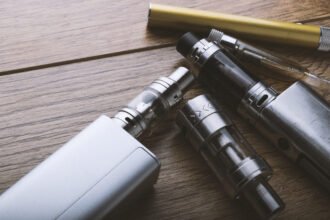One of the leading causes of amputation and disability in the United States, diabetes is an endocrine problem where the pancreas fails to produce adequate amounts of insulin, or perhaps doesn’t produce any insulin at all.
It’s a pretty common problem, so you may very well encounter someone with diabetes while you’re in the wilderness. In a healthy person, once ingesting food, the body breaks it down and insulin is used to transport nutrients (such as sugar) into the cells for use.
One of the leading causes of amputation and disability in the United States, diabetes is an endocrine problem where the pancreas fails to produce adequate amounts of insulin, or perhaps doesn’t produce any insulin at all.
It’s a pretty common problem, so you may very well encounter someone with diabetes while you’re in the wilderness. In a healthy person, once ingesting food, the body breaks it down and insulin is used to transport nutrients (such as sugar) into the cells for use.
TYPES OF DIABETES
There are two types of diabetes: insulin dependent diabetics (Type I) that rely almost entirely upon supplementary insulin to “feed their cells” and survive, while non-insulin dependent diabetics (Type II) have a pancreas that creates enough insulin for survival, but needs to be helped with proper diet and oral diabetes medications (some decrease sugar, and some tell the pancreas to make more insulin).
Type II diabetes has been shown to be linked with obesity; and sadly, is being diagnosed in younger and younger patients. After some time, a person with non-insulin dependent diabetes may become insulin-dependent.
Any diabetic should be prepared for an outing with adequate supplies and testing capabilities. They should discuss with the group leader ahead of time what the evacuation parameters are in case of a diabetic emergency (for example: two readings over 250, or one reading below 60). The two manifestations of blood sugar levels causing a potentially life-threatening condition are hypoglycemia and hyperglycemia.
HYPOGLYCEMIA (95%)
Hypoglycemia accounts for nearly 95% of all diabetic emergencies, and occurs when the body’s blood sugar levels drop too low. Though diabetics are more at risk of this, non-diabetics may suffer episodes of hypoglycemia from time to time.
If someone suddenly exhibits signs such as cool/clammy skin, a shallow, rapid pulse, and a case of the “umbles” (grumbles, mumbles, stumbles, fumbles, tumbles, etc.), they may be experiencing a hypoglycemic event. This can be caused by skipping meals, illness, strenuous activity, or too much insulin. If our blood sugar drops too low, we are at risk for coma or even death. Treat this person by administering sugar!
HYPERGLYCEMIA (5%)
Accounting for only about 5% of all diabetic emergencies, hyperglycemia has a more gradual onset. Hyperglycemia takes place when blood sugar levels are too high. Depending upon a diabetic’s normal blood sugar level, they may begin exhibiting symptoms of hyperglycemia when their sugar is 200, or it may be 600 before they show symptoms.
These patients may appear to have flushed dry skin, be restless, may appear drunk, be tachycardic (have a very fast heartbeat), have rapid breathing, and have “fruity” breath. If hyperglycemia continues unmanaged, the patient may become comatose. The treatment for this is evacuation. You do not want to administer their insulin because even the slightest overdose can be fatal. They will die faster from hypoglycemia than from hyperglycemia. Remember that!
TREATING DIABETIC EMERGENCIES
Besides using the patient’s glucometer to measure their blood glucose levels, there is no definitive way of telling the difference between hypo- and hyperglycemia. Both diabetic emergencies present themselves as a patient who is ALoR, may be having trouble breathing, is most likely combative, and may appear to be teetering on the verge of shock.
SIGNS & SYMPTOMS: DIABETIC EMERGENCIES
+ Altered Level of Responsiveness
+ Cool, clammy skin
+ Weak & shallow heart beat
+ Classic signs of shock
+ Combative behavior
+ Sweet mouth odor
We know that over 95% of all diabetic emergencies are due to low blood sugar levels, and therefore the treatment for all diabetic emergencies is the same: administer sugar. Since most diabetic related emergencies are due to low blood sugar levels, this approach should warrant you seeing a noticeable increase in their overall appearance and level of responsiveness within minutes.
 If you don’t see a dramatic increase in the patient’s mental status, suspect hyperglycemia and begin planning your evacuation route immediately. Simple sugars are the best type of sugar to administer, and can be found in cake icing, pop-rocks candy, and sugar paste.
If you don’t see a dramatic increase in the patient’s mental status, suspect hyperglycemia and begin planning your evacuation route immediately. Simple sugars are the best type of sugar to administer, and can be found in cake icing, pop-rocks candy, and sugar paste.
For patients showing decreased mental status, place sugar in their mouth along the gums to avoid choking. You may need to administer a significant amount of sugar to have an effect.
If you decide to use cake icing, be sure to get white icing as white isn’t a color that is easily confused with other liquids, etc. Blue icing would turn your patient’s lips blue. Are they blue now because of the icing or because they are turning cyanotic?
NEVER administer a patient’s insulin. The slightest overdose may be fatal.
Copyright © The Comprehensive Guide to Wilderness First Aid
2011 The Center for Wilderness Safety Inc. ALL rights reserved.





